Cuban painter, sculptor and satirist Reynerio Tamayo spoke to us about Opening Day, Cubans’ love for baseball, and the growing opportunities for Cuban artists in the world.
When they take the field on Opening Day this afternoon, the Chicago White Sox roster will include no less than four Cuban players, part of an unprecedented wave of Cuban talent in Major League Baseball.
As it happens, the first art exchange in more than 50 years between art institutions in the U.S. and Cuba took place in Key West and Havana last month, and it had a serious baseball flavor. Roads & Kingdoms was there for the (somewhat controversial) Florida leg of the exchange and met Reynerio Tamayo, a master of many media for whom baseball is not just an obsession, but also the perfect lens for viewing the absurdities of the U.S.—Cuban divide.
He spoke to us via email today about Opening Day, Cubans’ love for baseball, and the growing opportunities for Cuban artists in the world.
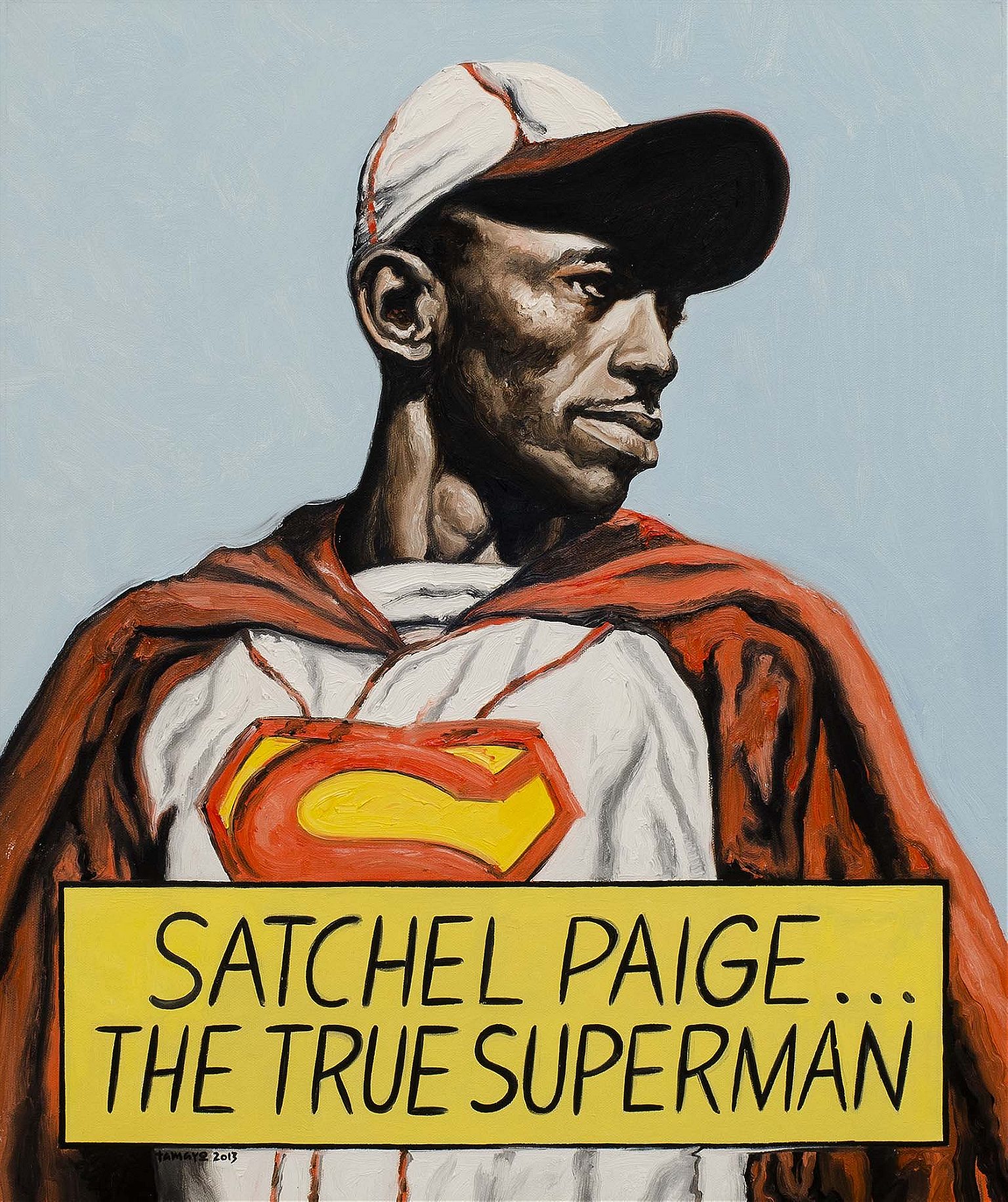
Roads & Kingdoms: Why is baseball so central to much of your art?
Reynerio Tamayo: In my third year of art school, I did a series of baseball-themed watercolors on paper—that was my first experience of painting the sport. The series was then shown in a solo exhibition in Havana. After this experience I revisited the theme occasionally, but it wasn’t my main idea… I was immersed in other series, other ideas, other motivations. But I came back to baseball for an homage to the Cuban National Team in the most recent World Baseball Classic.
When Nance Frank [who organized the recent Key West show] visited my workshop in Havana, she told me about One Race/The Human Race, intended as an exchange between artists from Cuba and the U.S…. I loved the idea. Nance encouraged me to create a sample with the baseball theme, because it’s a sport that people are passionate about in both the U.S. and in Cuba.
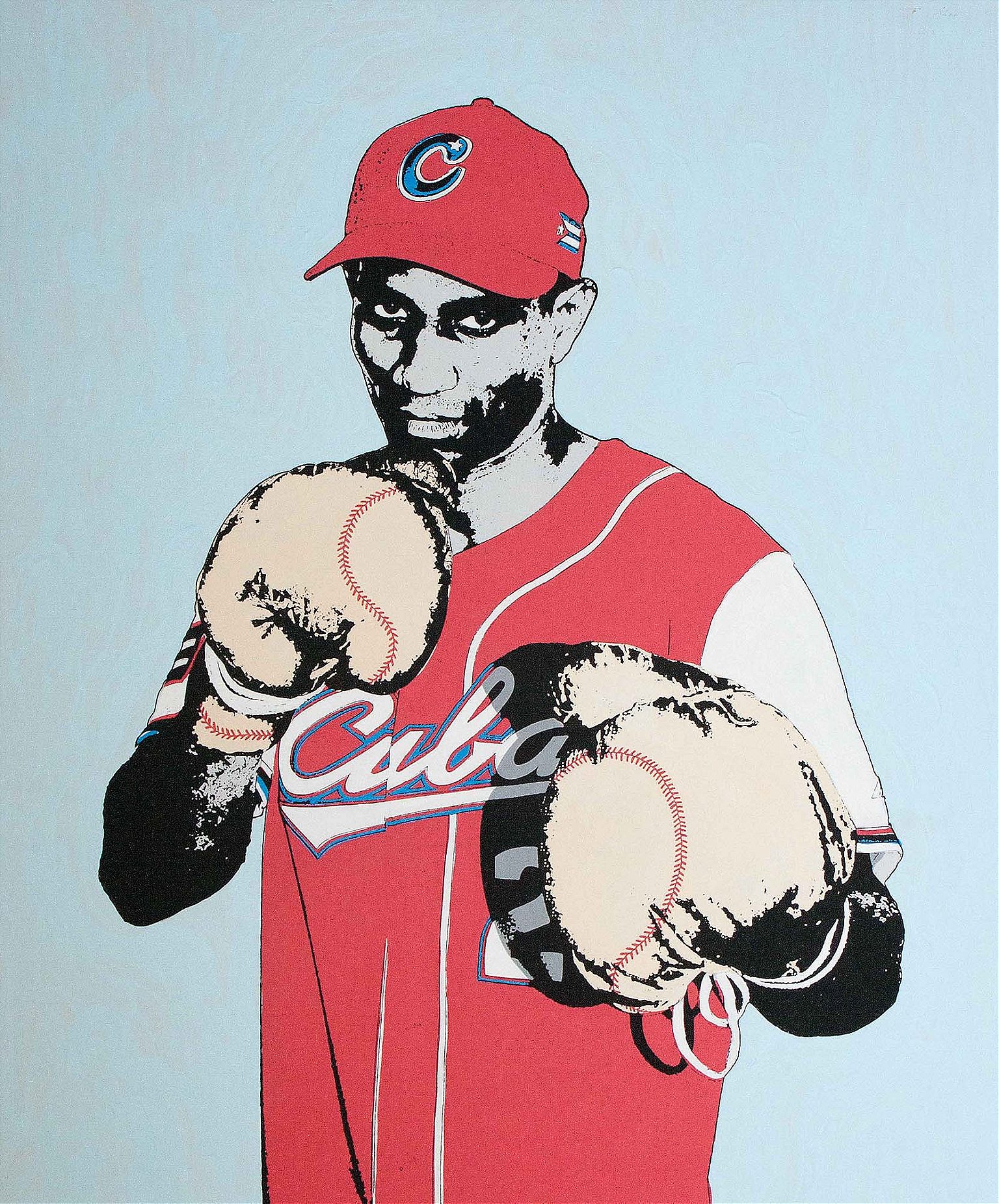
R&K: What is it about Cubans and baseball? Is the connection emotional? Historical? Something else?
Reynerio Tamayo: With Cubans, history, baseball, emotion… everything is bound together. It wasn’t too long ago when baseball made its first appearance—Cuba was a colony of Spain and there was a lot of desire for independence, and part of the appeal of the sport was that baseball was a symbol for Cuban identity, because it represented a challenge to the bullfighting that symbolized the Spanish empire. Since then, baseball has crystalized in Cuba into a socio-cultural phenomenon. People’s passion for the sport is connected to Cuban identity.
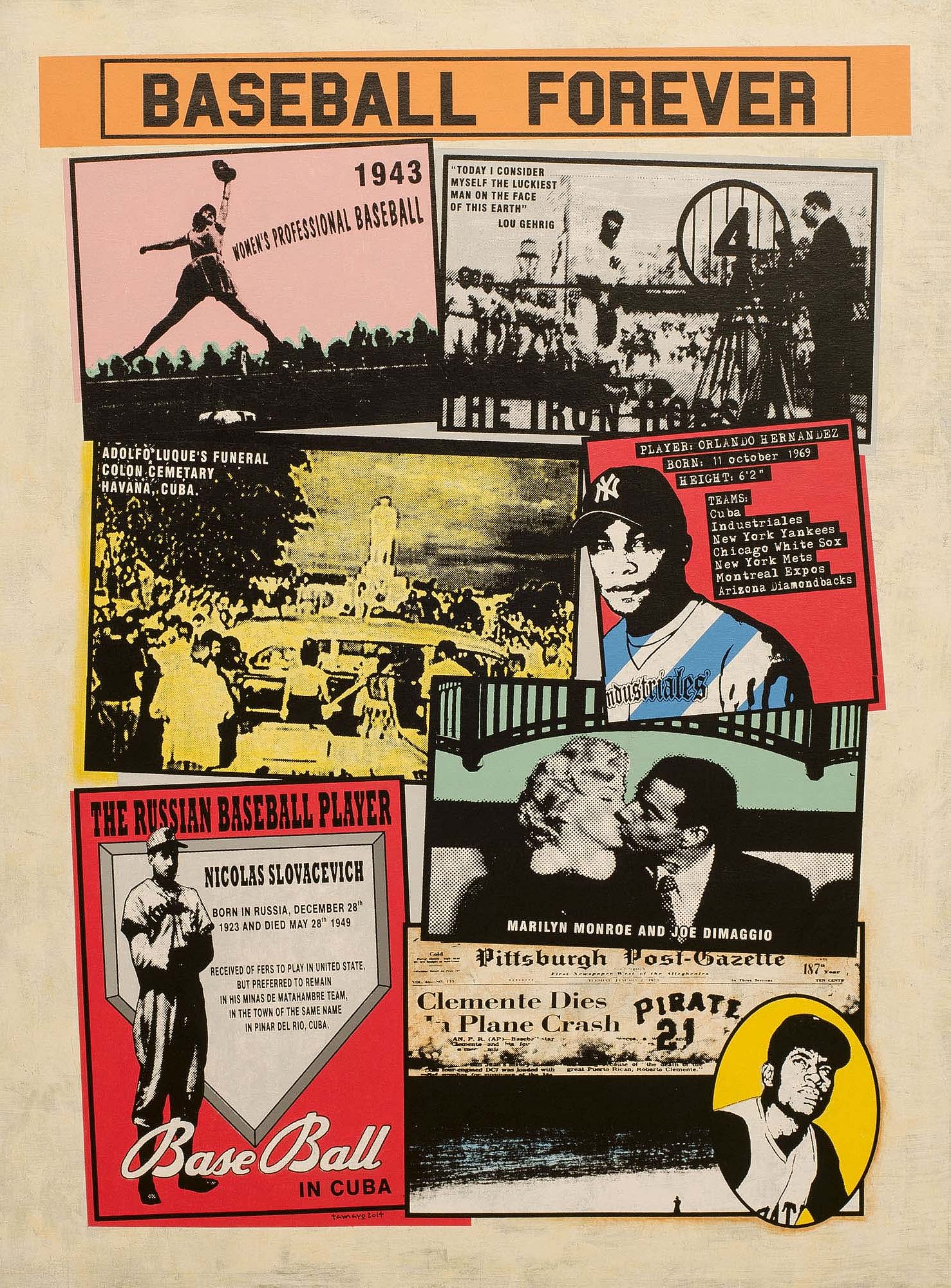
R&K: Today is opening day for Major League Baseball in the States. The league is more Cuban than ever, from Yasiel Puig to Aroldis Chapman. In fact, 30 Cubans have signed major league contracts since 2009. Is the Cuban league suffering from the loss of all that talent?
RT: I am answering as a fan: If the key players on these teams, for whatever reason, are no longer present, it is clear who suffers this loss; it affects the competitiveness of the team, and it takes a lot of investment to assemble another team of the same caliber. On the other hand, life goes on, and in Cuba you are born with a baseball in your hand. New talent will emerge and each person will choose their destiny.
R&K: Will Cubans be watching the Major League season through satellite or other ways?
RT: Cuban TV, after a long delay, now shows major league games along with games from Mexican, Japanese, Dominican, Puerto Rican, Venezuelan and South Korean leagues. There are documentaries about the lives and athletic careers of leading players in the MLB and other leagues, and about famous stadiums—there is enough information about the world of baseball. Actually, just now as I answer these questions I’m watching, on Cuban TV, Mariano Rivera’s farewell in Yankee Stadium.
R&K: Baseball is Cuba’s national sport, but some in the younger generation seem to be forsaking baseball for soccer. Do you worry about the future of the sport on the island?
RT: Keep in mind that soccer is the world’s most popular sport, and the national sport of many countries; it also has a lot of influence in the media. It can’t be denied that this affects the young in particular. But it would be a mistake to think that soccer can replicate the passion Cubans have for baseball. Right now the Cuban league is holding its playoffs, and the entire island has turned into an extension of a baseball stadium, following the final matches of the season. Baseball runs through the veins of most Cubans.
BASEBALL WAS A CHALLENGE TO BULLFIGHTING, SYMBOL OF THE SPANISH EMPIRE
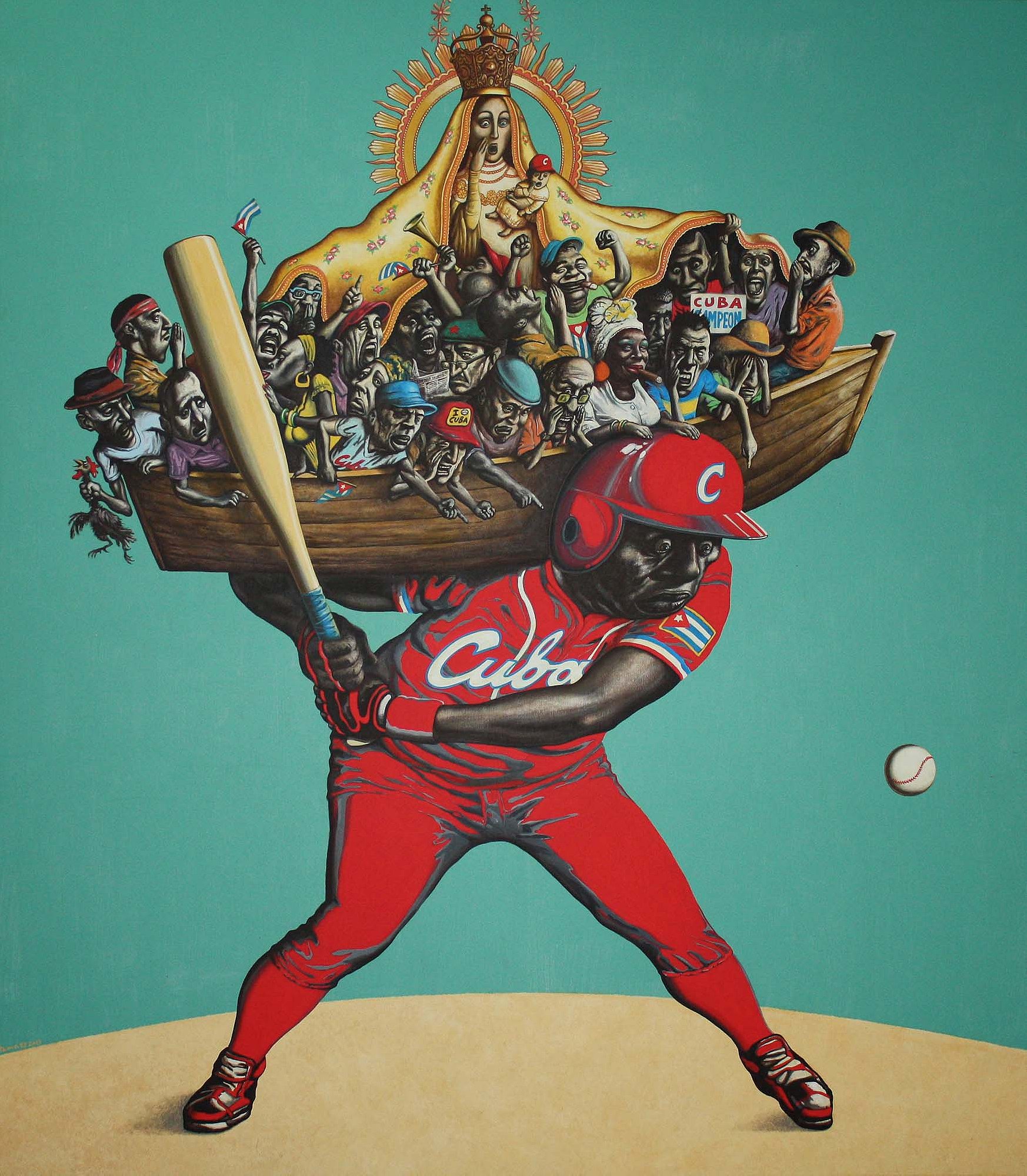
R&K: I’m fascinated in particular by this painting above, The Cleanup Hitter (El Cuarto Bate). What’s the meaning?
RT: In baseball, to bat cleanup you have to be a power player with a great batting average, responsible for racking up RBIs in key moments of the game, which can often determine their outcome. If you think about this and look at the painting, you can imagine the pressure he must be under right before he hits—not to mention the fact that he’s also wearing the Cuban national uniform. So on his shoulders I put lots of characters representing the Cuban people—including Our Lady of el Cobre, the island’s patroness, and a symbol of all things Cuban.
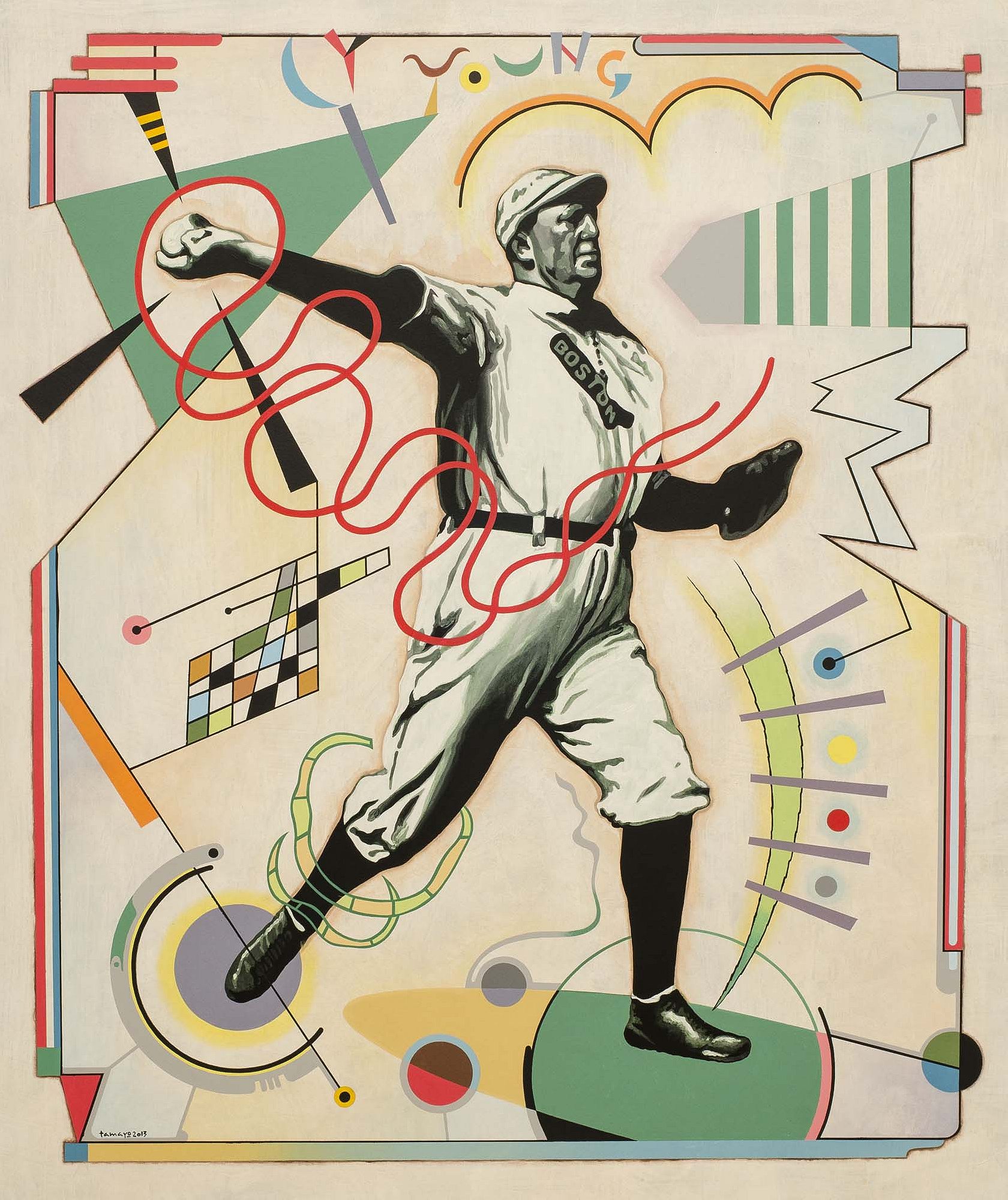
R&K: You’ve been active in the art world in Cuba for a long time. Has the economics of art changed with Raul’s steps of liberalizing the economy?
RT: Even long before Raul’s presidency, I came into contact with people interested in Cuban art and artists, I remember this was common especially in the second half of the 1990s. Since then, collectors, galleries, museums and many others have passed through. One way or another, this has meant there has been a lot of development in art and artists, and there are talented artists now working with major galleries in New York, the United Kingdom, Spain, Brazil, and other places.
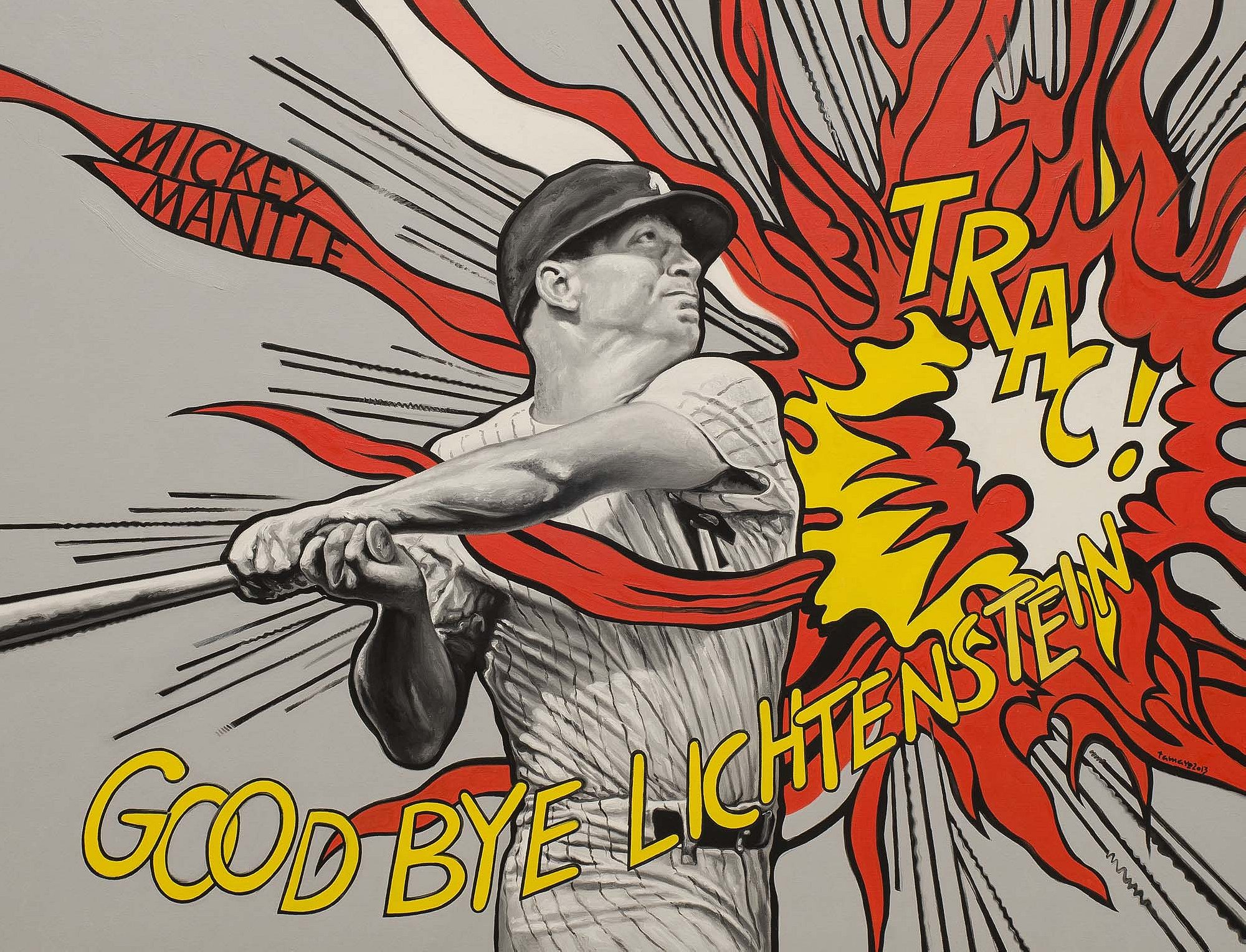
R&K: Exit visas have been scrapped; is it much simpler to travel outside of Cuba now for everybody, or only for some? Is it simpler now as an artist to travel outside Cuba, especially to the U.S.?
RT: Yes, I think it’s far easier now for artists to showcase their work outside of Cuba, and many have even been granted five-year visas for the United States.
R&K: Had you been to the U.S. before your visit to Florida in February? How was your experience?
RT: It was the first time I visited the US, and I was fortunate to be able to travel with my wife. It was marvelous for both of us. We stayed in Florida for 14 days, mostly in Key West. The best part of the trip was not just being able to show my paintings, but experiencing the cooperation, support and respect given to the people involved in the “One Race/The Human Race” exchange. There were many experiences that I cannot fit into this interview; we were touched by the humanity of the people we met there. Key West—known to Cubans also as Cayo Hueso—is somewhere we would go back to. There is a connection to Cuba, and a rich history binds Key West to the Greater Antilles. For us, it is a very dear place.
IT WAS THE FIRST TIME I VISITED THE US, AND I WAS FORTUNATE TO BE ABLE TO TRAVEL WITH MY WIFE
R&K: Some local Cuban-American leaders published an op-ed that called the artistic exchange “a propaganda platform for the Castro regime to promote the falsehood of artistic freedom in Cuba.” What is your response to those kinds of arguments?
RT: When it comes to Cuba and the United States and this controversy, opinions differ. Some believe that these exchanges are successful and some don’t. The fact is, there must be authorization from both countries for these exchanges to take place. Personally I think it is a good thing. I am a citizen of Cuba, but I am also a citizen of the world and beyond politics there is the human being. Hopefully, beyond cultural exchanges, the citizens of both countries will be able to visit each other normally.

R&K: What is next for you?
RT: I’m going to keep working. I’m committed to various projects in the immediate future, including preparing pieces to show in a fellow artist’s exhibition at the next Havana Biennale, in 2015.